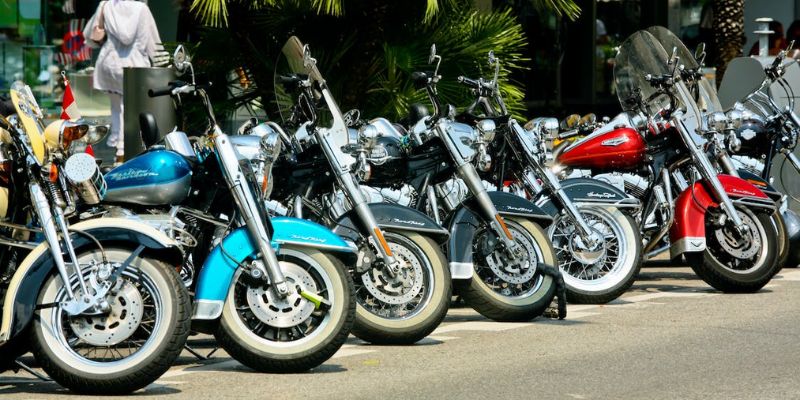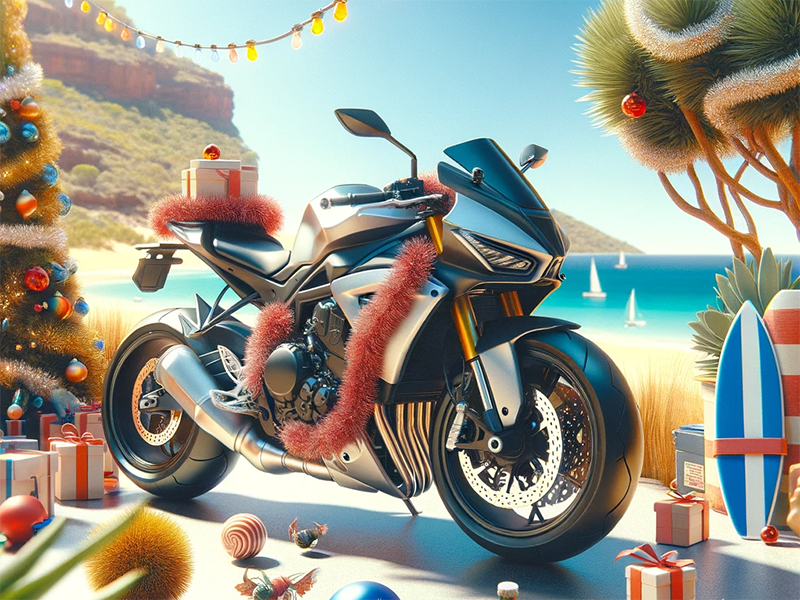Embarking on the thrilling journey of motorcycle riding? If you’re in Victoria, Australia, it’s essential to understand what motorcycles you can ride with your learner licence. With diverse options, picking a bike that ensures you’re safe and compliant with local regulations is crucial. Here’s a comprehensive guide to help you understand exactly what motorcycle can I ride on my learners?
Eligible Motorcycles for New Riders in Victoria
In Victoria, those holding a learner permit or a license with restrictions can only opt for motorcycles and scooters under the Learner Approved Motorcycle Scheme (LAMS). VicRoads oversees the LAMS register, which showcases accepted motorcycle models with engine capacities between 261 – 660cc. This compilation is dynamically updated to encompass newly recognized models.
Some motorcycles might be left out from the LAMS directory if they exhibit traits not fit for beginners or if they are disproportionately involved in accidents.
To be categorized under LAMS, a motorcycle must adhere to the following:
- Remain in its original configuration, straight from the manufacturer.
- Avoid alterations that amplify its power relative to its weight.
- Maintain a power-to-weight parameter not surpassing 150 kilowatts per tonne.
- Have an engine size that doesn’t exceed 660cc.
Furthermore, motorcycles with engine sizes between 0-260cc, in their untouched state from the manufacturer, are typically recognized under LAMS, barring a few exceptions. Bikes made before 1960 with a volume of up to 660cc and the latest electric-powered motorcycles are also sanctioned for those starting their riding journey.
Starting Your Journey: Understanding The Basics
Before jumping into our list, it’s essential to be familiar with the motorcycle license vic system. This process provides structured training and assessment, ensuring you become a competent and safe rider.
1. Learner’s Permit Requirements
To be eligible for a learner’s permit in Victoria, you need to:
- Be at least 18 years old
- Complete the mandatory training and assessment
- Pay the required fee
- Once you’ve got your permit, you can start practising! But the question remains, What motorcycle can I ride on my learners?
Motorcycles Approved for Learners in Victoria
2. Capacity Restrictions
Your learner’s permit imposes certain engine capacity restrictions. Generally, bikes with a capacity of up to 660cc and a power-to-weight ratio not exceeding 150kW/tonne are considered learner-approved. These restrictions are in place to ensure that learner riders can handle the power and torque of larger, more potent bikes. Adhering to these regulations is not just about legality; it’s about easing into the world of motorcycling with safety in mind.
3. Avoid High-Performance Bikes
Superbikes or high-performance motorcycles are typically not suitable for learners. Even if they fall within the engine capacity bracket mentioned, their high power and speed can be overwhelming for newcomers. These bikes are designed with experienced riders in mind, offering rapid acceleration and top speeds. For someone still learning the ropes, controlling such power can be challenging and might lead to dangerous situations or habits on the road.
4. Consider Your Purpose
When asked, What motorcycle can I ride on my learners? It’s also essential to consider your intended use for the bike. Are you commuting, touring, or trying off-road adventures? Different bikes suit different purposes. A daily commuter might prioritise fuel efficiency and comfort, whereas someone looking to tour would need storage and long-distance capabilities. Similarly, off-road enthusiasts would lean towards durability and handling on uneven terrains. Recognising your primary use can guide your decision-making, ensuring you get the most out of your riding experience.
Recommended Bikes for Learners
Here’s a concise list for those wondering What motorcycle can I ride on my learners?
5. Commuting Motorcycles
For daily commuting:
- Yamaha YZF-R3
- Honda CB500F
- Suzuki SV650
6. Touring Motorcycles
For those looking to cover longer distances:
- Kawasaki Vulcan S
- Yamaha Tracer 700
7. Off-Road Motorcycles
For off-road enthusiasts:
- Suzuki DR-Z400E
- Honda CRF300L
- Kawasaki KLR650
Preparing for the Motorcycle License Vic Process
Once you’ve chosen your bike, it’s time to focus on mastering your skills to move from the learner’s permit to a full motorcycle license vic.
8. Invest in Training
While the internet is flooded with riding tips and tutorials, there’s no substitute for hands-on professional guidance. Companies like Stay Upright offer expert training to navigate the motorcycle license vic process efficiently. Under the supervision of seasoned trainers, you’ll be introduced to best practices, advanced techniques, and real-world scenarios. Such training sessions also provide an invaluable opportunity to clarify doubts, learn from mistakes in a controlled environment, and receive feedback tailored to your strengths and areas of improvement.
9. Regular Practice
To get comfortable on your bike and master control, ensure you practice regularly. Adhering to the rules and being aware of your surroundings can significantly impact your riding experience. Consistent practice helps reinforce the lessons learned during training sessions and gradually allows you to build confidence on the road. With each ride, you’ll become more attuned to your bike’s responses, the dynamics of traffic, and potential road hazards. Remember, like any skill, motorcycling gets better with repetition and dedication.
The Importance of Safety Gear
While figuring out What motorcycle can I ride on my learners? is vital, so is investing in top-notch safety gear. The right helmet, gloves, jacket, and boots can make a world of difference regarding safety. Motorcycle learners in VIC must also wear an approved high visibility vest or jacket that is visible properly fitted and fastened. Remember, your gear is a second skin, protecting you from potential road hazards and accidents.
Understanding Motorcycle Maintenance
A well-maintained bike isn’t just about aesthetics. Regularly checking your motorcycle’s oil, brakes, tyre pressure, and lights is essential for your safety and bike longevity. If you need to familiarise yourself with the basics, consider attending a maintenance workshop or seeking guidance from seasoned riders.
Joining a Riding Community
Being part of a riding community can be immensely beneficial for learners. Not only does it provide an opportunity to learn from experienced riders, but it also offers a sense of camaraderie and support. Group rides or motorcycle events can enhance your skills and enrich your riding experience.
Adapting to Different Riding Conditions
Victoria’s diverse weather conditions can pose different challenges for riders. From rainy days to scorching heat, it’s essential to be prepared. For instance, wet roads can be slippery and require cautious riding. On the other hand, staying hydrated and wearing breathable gear is key during hot days. As a learner, familiarising yourself with various conditions will make you a more versatile and confident rider.
Conclusion
Embarking on the motorcycle journey is exhilarating. Understanding What motorcycle can I ride on my learners? Not only keeps you legal but also ensures your safety on the road. So, pick the right bike, invest in good training, and you’re well on your way to becoming a skilled rider in Victoria!



